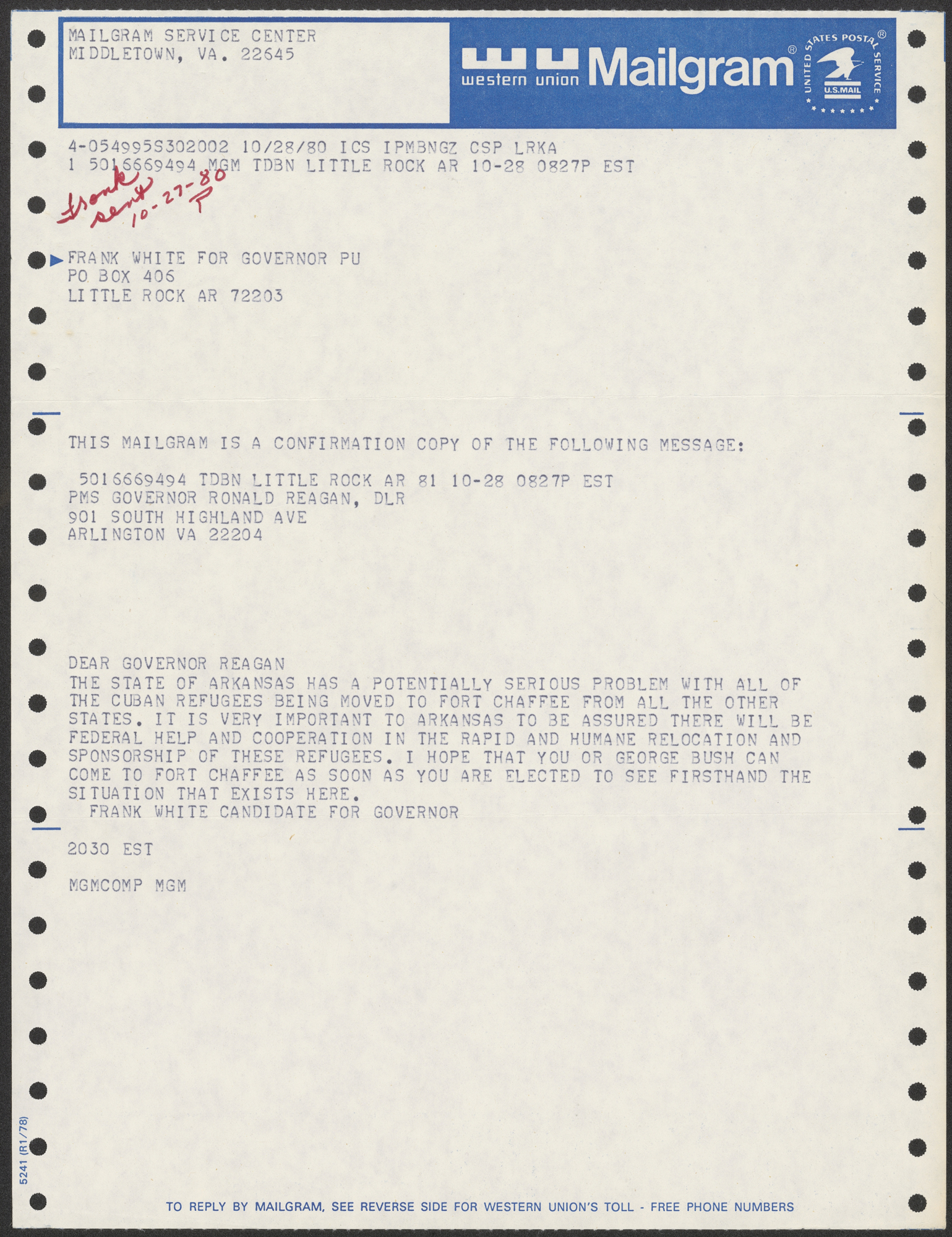Federal vs. State
The mass movement of 125,000 Cubans into the United States and the subsequent actions by the federal government inherently caused tensions with state governments who had federal installations within their borders. The mass migration also took place during an election year which amplified the tensions between elected officials and changed election outcomes.
Initial Federal Response
After the influx of Vietnamese refugees in 1975, Congress passed the Refugee Act of 1980 with the goal of providing equal treatment for refugee claims in the country. Coincidentally, President Jimmy Carter signed the act on March 17, 1980, just one month before the Mariel boatlift began. President Carter also consolidated multiple disaster response agencies into FEMA to respond to crises like the Mariel boatlift. Once federal installations like Fort Chaffee were opened, it became clear that despite the organization of FEMA, the U.S. military remained a stronger government entity in dealing with the refugee crisis. The Mariel boatlift quickly overwhelmed the Refugee Act’s anticipated procedures and the Carter administration ended up categorizing the Marielitos as “entrants (status pending),” not as refugees. The U.S. military then took lead on refugee operations by opening military camps in Arkansas, Florida, Pennsylvania, and Wisconsin.
It soon became clear that the federal government was not unified in its approach to handling the refugee crisis which increased tensions with state officials. At a press conference on May 5, President Carter announced that “We’ll continue to provide an open heart and open arms to refugees seeking freedom from Communist domination….” A week later the U.S. State Department released a bulletin stating, “We will not permit our country to be used as a dumping ground for criminals who present a danger to society.” These incongruencies and the use of barbed wired military installations did not fit in with the image of the U.S. as a bastion of liberty and anti-communist democracy.
The tensions grew when disgruntled refugees rioted and marched toward the gates of Fort Chaffee in June 1980. Governor Clinton immediately went to the area and President Carter dispatched White House staffers Eugene Eidenberg and Tom Casey to the fort to help ease tensions. A day after the June 1 riot, the federal government promised that no new Cuban refugees would be sent to the state. Ultimately, that promise was not kept by the federal government.
Carter vs. Clinton
While at the National Governors Association meeting in August 1980, Governor Bill Clinton learned from Eugene Eidenberg that Fort Chaffee would be the consolidation site for Cuban refugees from four other federal detention sites. By October, the population at Fort Chaffee had risen from 3,000 to over 8,000 refugees. With only a month left before the 1980 gubernatorial election, Clinton’s Republican opponent, Frank White, had his ammunition with the events around Fort Chaffee to win the election. White hammered Clinton on two fronts in negative television ads, the rise in car tag prices, and the handling of Cuban refugees in the state. It worked and Frank White won the election to become the second Republican governor of Arkansas since Reconstruction. In December, Governor Clinton met with President Carter and later joked with the press about the meeting. “I told him I came to Washington with a few refugees I wanted him to sponsor. He was not amused.” Carter apologized to Clinton for potentially costing him votes.

Frank White / Reagan
Before the 1980 election, Frank White was already concerned with how he would handle the situation at Fort Chaffee. On October 27, 1980, White sent a Western Union Mailgram to Governor (and presidential candidate) Ronald Reagan, asking for assurances that the federal government would help relocate as many refugees as possible once Reagan assumed office. In February 1981, Governor White met with federal officials and imposed a deadline that the Cubans leave Arkansas within six months. White soon realized that the federal government was going to use the federal installation as they saw fit. Four weeks after White’s deadline of August 1, he sent a letter to President Reagan, Vice President George Bush, HHS Secretary Richard Schweiker, and others, asking for some movement with Fort Chaffee, writing, “It is seriously damaging my political credibility and future.” This allowed former Governor Bill Clinton the opportunity to publicly criticize Governor White for his handling of the refugee situation, saying to reporters in August 1981 that “...all of Mr. White’s problems with the Cuban issue are generated by the fact he didn’t tell the people the truth in the campaign…He couldn’t even meet the August 1 deadline.”
It would be over a year into Governor White’s term before all Cuban refugees had been removed from the fort. The last left on February 4, 1982.